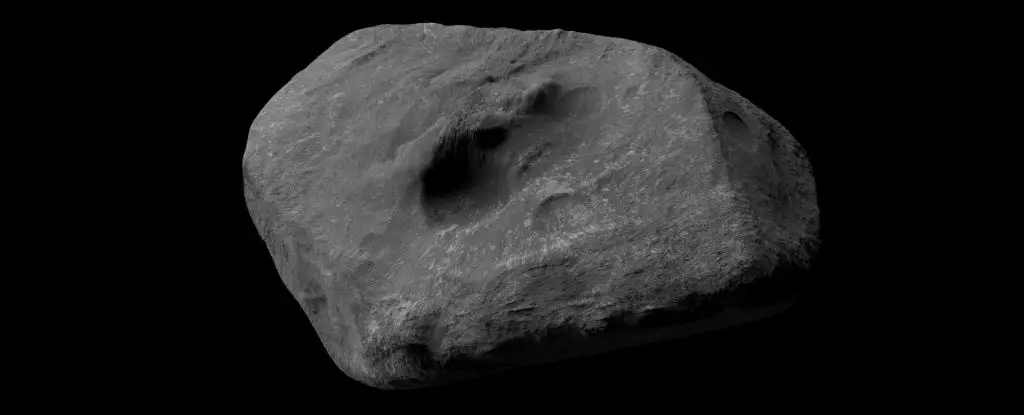The cosmic stage has always held mysteries that beckon the curiosity of humankind, but when asteroid 2024 YR4 made its debut on December 27, 2024, it took the world by surprise. For many, asteroids might evoke images of destructive forces or exhilarating scientific exploration, but the revelation of 2024 YR4 triggered immediate anxiety over potential disaster. Despite the zero risk of an actual collision during its discovery, the asteroid’s trajectory suggested a possibility of danger on its next approach in 2032. Luckily, it seems that the danger level has been significantly mitigated, leaving only a small chance of impacting the Moon. It is essential to underscore that the original alarm bells regarding this space rock were far from baseless; they underline the importance of ongoing vigilance and research in our quest for planetary defense.
Understanding its Origin: A Surprising Birthplace
Asteroids are usually categorized based on their origin, location, and composition within our Solar System. The discovery of 2024 YR4 has ventured into uncharted territories for many astronomers. Contrary to expectations, this asteroid originated from the central asteroid belt—a region that, until now, was thought to harbor few objects threatening Earth. Bryce Bolin, an astronomer at Eureka Scientific, expresses astonishment at this revelation. Recognizing that a gravitational maneuver initiated by the giant planet Jupiter nudged YR4 towards planet Earth, scientists are now faced with a compelling puzzle: how many more unseen threats are lurking in this central region of the main asteroid belt?
By pushing 2024 YR4, Jupiter—a planet typically serving as a shield against incoming asteroids—has ironically opened a new chapter in our understanding of celestial dynamics. This cosmic ballet illustrates not only the dance of gravity but the unpredictable potential for objects to shift into Earth-crossing orbits.
Examining the Characteristics of 2024 YR4
What sets asteroids apart from one another often lies within their physical traits and geological histories, and 2024 YR4 is no exception. A collaborative effort involving advanced telescopes such as the W.M. Keck and Gemini South has allowed researchers to paint a comprehensive picture of this intriguing rock. According to Bolin’s observations, 2024 YR4 showcases an unusual and flattened irregular shape akin to a hockey puck, which makes it stand out among a general population that is more commonly potato-like or spherical.
The fact that 2024 YR4 rotates every 20 minutes in a retrograde direction is another compelling characteristic, providing fresh insights into the asteroid’s formation. Its solid rock density indicates that this isn’t merely a loose collection of debris but rather a coherent structure that could inform future deflection strategies should the need arise.
Furthermore, its dimensions, ranging between 30 and 65 meters (98–213 feet), provide invaluable data in assessing its potential threat to Earth and other celestial bodies like the Moon. These attributes will undoubtedly prove crucial in refining techniques for rapid observations, effectively equipping us to handle future cosmic intruders.
The Asteroid Classification and Implications for Planetary Defense
Asteroids belong to a classified hierarchy, offering a glimpse into their geological make-up. While carbonaceous asteroids tend to be more like ‘rubble piles,’ composed of various minerals, S-type asteroids, such as 2024 YR4, are indicative of a denser composition—often one solid piece of siliceous rock. This understanding is pivotal as we formulate measures for planetary defense and impact mitigation strategies.
In the grand scheme of planetary defense, 2024 YR4’s attributes inform scientists on the potential behaviors of other hazardous asteroids. Each observation catapults us into a deeper understanding of our cosmic neighborhood, showcasing not just immediate threats but broader implications. Such research enables the scientific community to prioritize monitoring efforts and allocate resources effectively when potential dangers are identified.
A Call for Vigilance and Research
The revealing story of 2024 YR4 epitomizes the dynamic nature of our solar system, demonstrating how unpredictable celestial events can emerge without warning. The continuing study of such objects reinforces the need for more rigorous observational techniques and continual research efforts in planetary defense.
In light of the momentum generated by discovering 2024 YR4, it is clear that we are at a pivotal point in our understanding of these celestial bodies. As researchers anticipate the asteroid’s next approach, they also grapple with the ever-present question: How many more hidden threats await our attention? As we unravel the complexities of the cosmos, each discovery serves not only to inform but to empower our strategies for safeguarding Earth and its inhabitants.


Leave a Reply